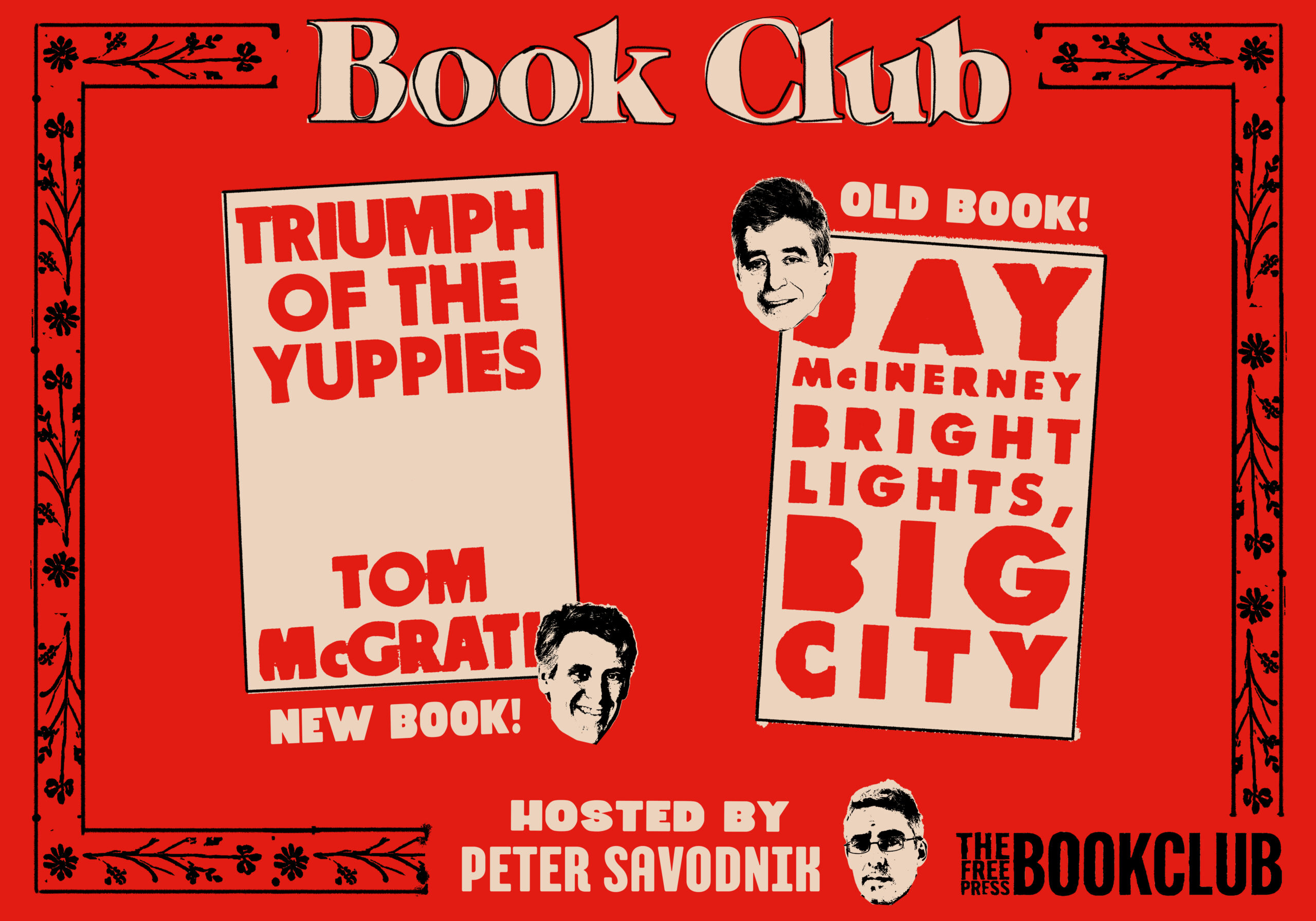Substacks
How right-wing media is legitimizing a nonsensical and nonexistent lawsuit Judd Legum

This is a special joint edition of Popular Information and Aaron Rupar’s Public Notice. You can subscribe to Public Notice here.
On June 20, Missouri Attorney General Andrew Bailey announced on X that he was filing a lawsuit against the State of New York. According to Bailey, when a New York jury convicted Donald Trump of 34 felonies, it was a “direct attack on our democratic process through unconstitutional lawfare” that “sabotage[d] Missourians’ right to a free and fair election.”
In one sense, this announcement has already been a success for Bailey. The governor of Missouri appointed him as Attorney General in 2023. Today, Bailey is in the middle of a campaign for a full term. In August, Bailey will face Will Scharf, a member of Trump’s legal team, in the Republican primary. Specifically, Scharf is part of the team handling appellate matters for the former president.
Since the announcement, Bailey has been a frequent guest on conservative media outlets — including Fox News and Newsmax — to talk about his decision to sue New York. It positions Bailey, not Scharf, as the most aggressive legal defender of Trump. “Radical progressives in New York are trying to rig the 2024 election,” Bailey told Fox News. “We have to stand up and fight back.”
And yet, nearly a week after Bailey’s announcement, the lawsuit still does not exist. Presumably, Bailey will eventually file something, but it will be difficult to construct a complaint that has any credibility.
In the United States, in order to have standing as a plaintiff in a lawsuit, you must have an “injury in fact.” In other words, it is not enough to allege that something illegal occurred. The lawsuit must show that the plaintiff was actually harmed.
How was Missouri harmed by the criminal charges filed against Trump in New York? Bailey has struggled to come up with a convincing answer.
In an appearance on The Benny Show, an online program hosted by right-wing polemicist Benny Johnson, Bailey said that “Missouri has a sovereign interest in participating on equal footing with other states in a national presidential election.” Bailey then said New York, by prosecuting Trump, is “taking a presidential candidate off the campaign trail.” This, according to Bailey, violates the First Amendment rights of Missourians to “hear from their preferred candidate.”
Of course, Trump’s criminal prosecution has not prevented him from campaigning, except on days when he was required to be in court. So, the alleged constitutional violation appears to be that the trial prevented Trump from campaigning in Missouri every day. Trump has held numerous events before, during, and after the trial. He just chose not to go to Missouri. Trump has not held a campaign event in Missouri since September 2018. Clearly, his absence from Missouri this year has little to do with New York’s criminal prosecution.
Bailey also claimed that after Trump’s sentencing on July 11, “onerous” provisions, including jail time, house arrest, or community service, will further impact his ability to campaign in Missouri. Criminal convictions, of course, do result in some inconveniences for the guilty. But being punished for a crime is not a constitutional violation. The reality is that any sentence will likely be stayed pending Trump’s appeal, which will not be resolved until long after the election. It is unlikely that Trump will visit Missouri before election day, but that will be his choice.
Finally, Bailey is promoting his theoretical lawsuit by promising that it will be adjudicated by the Supreme Court. Bailey is correct that the Supreme Court does have original jurisdiction over disputes between states, but it is not required to exercise its jurisdiction. Bailey acknowledged that his attempt to access the Supreme Court this way is unprecedented. Previous cases between states considered by the Supreme Court, Bailey admitted, were “about boundaries and water rights.”
Bailey also uses his media appearances to claim that Trump’s New York trial had constitutional and procedural issues. On Newsmax, Bailey compared Trump with Abraham Lincoln, saying, “Look, no one would’ve tolerated it if 1860, a rogue DA in South Carolina had prosecuted Lincoln for speaking out on abolition issues and taken him off the campaign trail.” Trump, however, was convicted of illegally falsifying business records to cover up hush money payments in the closing days of a presidential election. This bears little resemblance to speaking out against slavery.
Even if one assumes all of Bailey’s claims were true, Trump is the party that was harmed. And Bailey’s opponent is assisting Trump’s appeal.
During his Fox News appearance, Bailey didn’t try to conceal what his threatened lawsuit is really all about. “It’s time to prosecute the prosecutors,” Bailey said, echoing a frequent Trump talking point.
Sinclair promotes and mischaracterizes Bailey’s lawsuit
Despite the clear problems with Bailey’s promised lawsuit, conservative media sprung to action to legitimize it. In particular, Bailey’s lawsuit against New York is a fresh demonstration of how Sinclair Broadcast Group uses its network of affiliates to inject right-wing propaganda into local news telecasts and websites.
Bailey’s tweet announcing his intention to file a lawsuit was covered last Friday by Sinclair’s National Desk. The piece, authored by Jackson Walker, is short and shoddy. The only person quoted other than Bailey is conservative culture warrior Riley Gaines, a former collegiate swimmer who has no legal bona fides and is best known for pushing transphobia during her regular Fox News appearances.
Nevertheless, Walker’s piece was pushed from The National Desk to the websites of dozens of Sinclair affiliates across the country, where it was given the imprimatur of mainstream media brands like NBC, ABC, and CBS.
Then, on Tuesday, a misleading news brief about Bailey’s threatened lawsuit was included in The National Desk’s syndicated morning show, where it was broadcast in more than 70 local markets all across the country.
“Missouri suing New York over its prosecution against former President Trump,” anchor Jan Jeffcoat began, falsely claiming that Bailey’s lawsuit is going “straight to the Supreme Court.”
Jeffcoat did not mention that the lawsuit has not been filed or that the Supreme Court is under no obligation to hear the case
The Bailey formula for MAGA stardom
Even though he’s still never won an election, Bailey is a rising MAGA star. Since being appointed to office in January of last year, Bailey has become a fixture on right-wing TV, and he has proven to be especially skilled at using X to advance his brand of reactionary politics.
Late last year, Bailey announced on X his intention to sue Media Matters for America after Media Matters reported that X was displaying ads for prominent brands next to neo-Nazi content. Bailey filed the suit at the urging of Elon Musk and Trump adviser Stephen Miller.
This year, based on a deceptive Project Veritas video, Bailey announced on X his plan to file a lawsuit against Planned Parenthood that he said was aimed at driving Planned Parenthood out of Missouri.
In both instances, Bailey’s lawsuits ended up being remarkably flimsy. But the merits are beside the point. Bailey’s tweets spread like wildfire within MAGA circles on social media, and then became big topics of conversation on Fox News, Newsmax, and other right-wing outlets. These legal stunts shaped news cycles and raised Bailey’s profile as a national MAGA leader.
Substacks
June 28, 2024 Heather Cox Richardson
Substacks
Book Club: The Triumph of the Yuppies Peter Savodnik

Last month, we launched The Free Press Book Club, in which one of our writers recommends a new book they love along with a classic work from the past echoing its themes.
In May, Nellie Bowles praised P.J. O’Rourke’s Parliament of Whores—and the joys of political satire—and paired it with, what else? Her own book, Morning After the Revolution. (Did we mention it became a New York Times bestseller?)
Today, Free Press columnist Peter Savodnik picks Triumph of the Yuppies by Tom McGrath, who argues that the rise of the “young urban professional” in the ’80s corrupted America for good. Peter is matching this book with the classic Bright Lights, Big City by Jay McInerney, who became the unofficial “spokesman for the yuppies” after publishing his breakout novel in 1984.
Below, you’ll find an essay from Peter about how yuppies came to be such an influential and corrosive force in our culture—ultimately leading to the election (and possible reelection) of Donald Trump. And if you’re a paid subscriber, we have a special treat for you. At the end of this piece, you can watch Peter in conversation with Tom McGrath and Jay McInerney about the legacy of the yuppie. They discuss Boomers, Wall Street, the culture of consumerism, a few questions from Free Press readers, and ultimately, they answer the bigger question: What can yuppies teach us about America today?
If you’re not already a paid subscriber, become one now to join our monthly book club. You can watch Peter’s conversation, comment on this essay, and get invited to future in-person book club events. (More on that later!):
Meanwhile, send us your thoughts about yuppies at books@thefp.com, and consider buying Bright Lights, Big City and Triumph of the Yuppies from the good people at Bookshop, where every purchase through these links earns a commission for The Free Press. Or if you’re an Amazon customer, click here for Tom’s book or here for Jay’s.
And now, here’s Peter on the Triumph of the Yuppies:
My wife and I were at a dinner party a few months ago, in the Hills, in Los Angeles.
Everyone was in their late 40s or early 50s, and there was a weariness that permeated the conversation—no one wanted to talk about the election, or the border, or China, or AI, or the encampments, or even Ozempic (which, I suspect, two or three people there were injecting regularly). Instead, we talked around the news. There was a vague longing for The Great Before. Before the screens, the brands, the narratives, the curators, the audience-builders. Before there was a conspiracy theory, or theories, swirling around literally everything.
The Great Before—“the time before everyone went crazy,” as our host put it—is the quasi-mythological, prelapsarian America we grew up in: the ’80s.
This is the thing you need to bear in mind about the ’80s: the gargantuan, unapologetic success of it all.
It wasn’t just about money. It was about ostentatiousness, and, really, the celebration of ostentatiousness. “Material Girl” was a hit. Family Ties was a hit. Working Girl was a hit, with its famous, wince-inducing line, uttered by Melanie Griffith: “I have a head for a business and a bod for sin—is there anything wrong with that?”
It was also about the American Dream—which had been battered by Vietnam, stagflation, crime, the Soviet invasion of Afghanistan, the Iranian storming of the U.S. embassy—suddenly rising once again. It was morning in America, as Ronald Reagan reminded us, and the problem was not us, but the communists and big government.
The subtext of all this amounted to an updated social Darwinism: our things were a testament to our national superiority, and our duty as Americans was to keep acquiring them. If we didn’t, could we really say we were superior to everyone else?
All of which is to say that it was not a terribly introspective moment.
Had it been more introspective, we might have realized that the rampant materialism of the yuppie led to a division that now threatens to undo our republic.
That is the suggestion of my Free Press Book Club pick today: Tom McGrath’s Triumph of the Yuppies: America, the Eighties, and the Creation of an Unequal Nation. While a lot of people made a great deal of money in the ’80s, McGrath writes that the era also fundamentally changed the country for the worse. And we are still living inside that country—whether we realize it or not.
Specifically, he argues that America, “in its push to revive itself, in its zeal to recapture the dominance and prosperity of the postwar era,” ultimately ended up “elevating self-interest over any sense of the common good.” In short, “the country had created a new economic and social order that wouldn’t easily be undone.”
We all know what the yuppie looks like—he’s the guy in the Hugo Boss power suit with the pocket square, the Rolex, the monogrammed silk suspenders, crushing it with his fellow investment bankers, throwing back gin buck cocktails at the Harvard Club.
But where did this chump, with his unslakable shallowness, come from?
In the late 1970s and early ’80s, immediately prior to the rise of the yuppie, there was—imagine this, young people of 2024!—a great deal of anxiety about the future.
“The economic burden fell particularly hard on the Baby Boom generation, who were twice as likely to be unemployed as their parents had been in the ’50s and who, even if they had jobs, hardly felt like they were getting ahead,” McGrath writes. Adjusted for inflation, he notes, young people’s salaries actually decreased by $300 annually from 1970 to 1980.
This anxiety, he argues, led to a renewed focus on money and ambition and making all the right decisions—about where one went to school, what one majored in, where one moved after college.
Or who one married, according to the yuppies quoted in McGrath’s book.
Like 28-year-old Robert Drumheller, who told Newsweek in 1981, that “it was very important for me to marry a professional person. One of my goals was to have a high standard of living, and with two incomes you get to the easy life much faster.”
All of a sudden, there was a race for jobs and promotions and spouses, and a relatively small number of young people surged ahead. In 1985, the Chicago Tribune estimated there were 4.2 million yuppies, or 5 percent of all Baby Boomers. Everyone else had been left behind. The era of shared, widespread, upward mobility that had characterized the ’50s and ’60s and petered out in the ’70s, was officially over.
Yuppie America, McGrath told me, was “where you really start to see this divide in America along economic and educational lines.”
It was in May 1980 that the journalist Dan Rottenberg, writing in Chicago magazine, coined the term yuppie, McGrath writes.
But it would take a few years before the public really became aware of this phenomenon—and before the phenomenon became aware of itself.
Then, in September 1984, Vintage Books published Jay McInerney’s Bright Lights, Big City, catapulting McInerney—then 29 and living on Manhattan’s Lower East Side—into something of a star.
“I woke up one morning right after the book was published,” McInerney told me, “and it was published to very little fanfare initially, but The Wall Street Journal picked up on it very quickly, and they announced that I was the spokesman for the yuppies, which kind of horrified me.”
Interestingly, the term yuppie never appears in Bright Lights, Big City. In 1983, when he wrote the novel, it was not yet popular; by the time the novel came out, McInerney said, “We were deep in the middle of this thing.”
In Bright Lights, McInerney’s unnamed, second-person protagonist, who inhabits the periphery of the yuppie universe, offers the first vivid account of this emergent, slightly horrifying species.
On the one hand, he is a New Yorker fact-checker and an aspiring novelist who fashions himself a man of letters—definitely not a yuppie. On the other hand, McInerney said, the protagonist’s best friend-slash-coke dealer, Tad Allagash, “has really no values except having more fun than everybody else and looking good while doing it, so there’s no question that I was chronicling that world.”
After Bright Lights, Big City took off—Triumph of the Yuppies notes that it sold 10,000 copies in its first three weeks and New York City bookstores couldn’t keep it in stock—McInerney had to change his phone number.
“People were calling me up to ask me advice on how to get to these various places” that he wrote about in the novel, “including quite a number that I just made up,” McInerney said. “There is no Lizard Lounge, but a lot of people wanted to know what street it was on.”
McInerney told me the new yuppie materialism amounted to “a rejection of parental values”—TV dinners, the suburbs, all the assumptions that had governed postwar, middle-class life.
What distinguished this boom time from previous boom times, McGrath added, was not simply the ferocity with which yuppies went about buying their Porsches and Cuisinarts and Julian Schnabel paintings and pretty much everything at Sharper Image. It was the nature of the materialism itself.
Earlier generations of Americans had subscribed to an “inclusive materialism,” McGrath told me—it was “a keeping up with the Joneses era,” when everyone shopped at Sears. But for yuppies, “it’s more of an exclusive materialism. ‘I’m going to own this thing, because most people do not have it, and it’s a way of setting myself apart, as opposed to a way of being part of the community.’ ”
“A new generation of young professionals wanted something more, something less common. The buzzword that people started using was quality. The things they purchased would be, like the lives they were trying to create for themselves, excellent.”
By 1985, the anti-yuppie backlash had begun. DIE YUPPIE SCUM started to appear on buildings and streetlamps downtown.
Then, on October 19, 1987, the stock market crashed—with the Dow Jones losing nearly 23 percent of its value, or $500 billion, in a single day. The era of the yuppie was apparently dead.
McInerney smirked when I suggested as much. “Yuppie culture is like the undead,” he told me. “It persisted and thrived and metamorphosed.”
In fact, both authors noted that the spirit of the yuppie is now alive and well in the ur-yuppie known as Donald Trump. Ironically, his 2016 election came about, McGrath writes, because “families at the top of the economic pyramid controlled 79 percent of all wealth in America, up from 60 percent in the 1980s.”
By then, the long-percolating anti-yuppie sentiment in blue-collar America had curdled into an angrier anti-elitism.
And the billionaire Donald Trump “somehow persuaded many working-class Americans that he was on their side.”
I loved talking to both of these writers and reading Triumph of the Yuppies and rereading Bright Lights, Big City. If you’d like to learn more about New York in the go-go ’80s, Ivan Boesky, Tad Allagash, the story behind the rise of Madonna, and Bolivian Marching Powder (read the novel, people), scroll down:
To listen to Peter’s discussion with Tom McGrath and Jay McInerney, become a subscriber today. You’ll also be able to continue the conversation in the comments.
Substacks
Book Club: The Triumph of the Yuppies Peter Savodnik
Last month, we launched The Free Press Book Club, in which one of our writers recommends a new book they love along with a classic work from the past echoing its themes.
In May, Nellie Bowles praised P.J. O’Rourke’s Parliament of Whores—and the joys of political satire—and paired it with, what else? Her own book, Morning After the Revolution. (Did we mention it became a New York Times bestseller?)
Today, Free Press columnist Peter Savodnik picks Triumph of the Yuppies by Tom McGrath, who argues that the rise of the “young urban professional” in the ’80s corrupted America for good. Peter is matching this book with the classic Bright Lights, Big City by Jay McInerney, who became the unofficial “spokesman for the yuppies” after publishing his breakout novel in 1984.
Below, you’ll find an essay from Peter about how yuppies came to be such an influential and corrosive force in our culture—ultimately leading to the election (and possible reelection) of Donald Trump. And if you’re a paid subscriber, we have a special treat for you. At the end of this piece, you can watch Peter in conversation with Tom McGrath and Jay McInerney about the legacy of the yuppie. They discuss Boomers, Wall Street, the culture of consumerism, a few questions from Free Press readers, and ultimately, they answer the bigger question: What can yuppies teach us about America today?
If you’re not already a paid subscriber, become one now to join our monthly book club. You can watch Peter’s conversation, comment on this essay, and get invited to future in-person book club events. (More on that later!):
Meanwhile, send us your thoughts about yuppies at books@thefp.com, and consider buying Bright Lights, Big City and Triumph of the Yuppies from the good people at Bookshop, where every purchase through these links earns a commission for The Free Press. Or if you’re an Amazon customer, click here for Tom’s book or here for Jay’s.
And now, here’s Peter on the Triumph of the Yuppies:
My wife and I were at a dinner party a few months ago, in the Hills, in Los Angeles.
Everyone was in their late 40s or early 50s, and there was a weariness that permeated the conversation—no one wanted to talk about the election, or the border, or China, or AI, or the encampments, or even Ozempic (which, I suspect, two or three people there were injecting regularly). Instead, we talked around the news. There was a vague longing for The Great Before. Before the screens, the brands, the narratives, the curators, the audience-builders. Before there was a conspiracy theory, or theories, swirling around literally everything.
The Great Before—“the time before everyone went crazy,” as our host put it—is the quasi-mythological, prelapsarian America we grew up in: the ’80s.
This is the thing you need to bear in mind about the ’80s: the gargantuan, unapologetic success of it all.
It wasn’t just about money. It was about ostentatiousness, and, really, the celebration of ostentatiousness. “Material Girl” was a hit. Family Ties was a hit. Working Girl was a hit, with its famous, wince-inducing line, uttered by Melanie Griffith: “I have a head for a business and a bod for sin—is there anything wrong with that?”
It was also about the American Dream—which had been battered by Vietnam, stagflation, crime, the Soviet invasion of Afghanistan, the Iranian storming of the U.S. embassy—suddenly rising once again. It was morning in America, as Ronald Reagan reminded us, and the problem was not us, but the communists and big government.
The subtext of all this amounted to an updated social Darwinism: our things were a testament to our national superiority, and our duty as Americans was to keep acquiring them. If we didn’t, could we really say we were superior to everyone else?
All of which is to say that it was not a terribly introspective moment.
Had it been more introspective, we might have realized that the rampant materialism of the yuppie led to a division that now threatens to undo our republic.
That is the suggestion of my Free Press Book Club pick today: Tom McGrath’s Triumph of the Yuppies: America, the Eighties, and the Creation of an Unequal Nation. While a lot of people made a great deal of money in the ’80s, McGrath writes that the era also fundamentally changed the country for the worse. And we are still living inside that country—whether we realize it or not.
Specifically, he argues that America, “in its push to revive itself, in its zeal to recapture the dominance and prosperity of the postwar era,” ultimately ended up “elevating self-interest over any sense of the common good.” In short, “the country had created a new economic and social order that wouldn’t easily be undone.”
We all know what the yuppie looks like—he’s the guy in the Hugo Boss power suit with the pocket square, the Rolex, the monogrammed silk suspenders, crushing it with his fellow investment bankers, throwing back gin buck cocktails at the Harvard Club.
But where did this chump, with his unslakable shallowness, come from?
In the late 1970s and early ’80s, immediately prior to the rise of the yuppie, there was—imagine this, young people of 2024!—a great deal of anxiety about the future.
“The economic burden fell particularly hard on the Baby Boom generation, who were twice as likely to be unemployed as their parents had been in the ’50s and who, even if they had jobs, hardly felt like they were getting ahead,” McGrath writes. Adjusted for inflation, he notes, young people’s salaries actually decreased by $300 annually from 1970 to 1980.
This anxiety, he argues, led to a renewed focus on money and ambition and making all the right decisions—about where one went to school, what one majored in, where one moved after college.
Or who one married, according to the yuppies quoted in McGrath’s book.
Like 28-year-old Robert Drumheller, who told Newsweek in 1981, that “it was very important for me to marry a professional person. One of my goals was to have a high standard of living, and with two incomes you get to the easy life much faster.”
All of a sudden, there was a race for jobs and promotions and spouses, and a relatively small number of young people surged ahead. In 1985, the Chicago Tribune estimated there were 4.2 million yuppies, or 5 percent of all Baby Boomers. Everyone else had been left behind. The era of shared, widespread, upward mobility that had characterized the ’50s and ’60s and petered out in the ’70s, was officially over.
Yuppie America, McGrath told me, was “where you really start to see this divide in America along economic and educational lines.”
It was in May 1980 that the journalist Dan Rottenberg, writing in Chicago magazine, coined the term yuppie, McGrath writes.
But it would take a few years before the public really became aware of this phenomenon—and before the phenomenon became aware of itself.
Then, in September 1984, Vintage Books published Jay McInerney’s Bright Lights, Big City, catapulting McInerney—then 29 and living on Manhattan’s Lower East Side—into something of a star.
“I woke up one morning right after the book was published,” McInerney told me, “and it was published to very little fanfare initially, but The Wall Street Journal picked up on it very quickly, and they announced that I was the spokesman for the yuppies, which kind of horrified me.”
Interestingly, the term yuppie never appears in Bright Lights, Big City. In 1983, when he wrote the novel, it was not yet popular; by the time the novel came out, McInerney said, “We were deep in the middle of this thing.”
In Bright Lights, McInerney’s unnamed, second-person protagonist, who inhabits the periphery of the yuppie universe, offers the first vivid account of this emergent, slightly horrifying species.
On the one hand, he is a New Yorker fact-checker and an aspiring novelist who fashions himself a man of letters—definitely not a yuppie. On the other hand, McInerney said, the protagonist’s best friend-slash-coke dealer, Tad Allagash, “has really no values except having more fun than everybody else and looking good while doing it, so there’s no question that I was chronicling that world.”
After Bright Lights, Big City took off—Triumph of the Yuppies notes that it sold 10,000 copies in its first three weeks and New York City bookstores couldn’t keep it in stock—McInerney had to change his phone number.
“People were calling me up to ask me advice on how to get to these various places” that he wrote about in the novel, “including quite a number that I just made up,” McInerney said. “There is no Lizard Lounge, but a lot of people wanted to know what street it was on.”
McInerney told me the new yuppie materialism amounted to “a rejection of parental values”—TV dinners, the suburbs, all the assumptions that had governed postwar, middle-class life.
What distinguished this boom time from previous boom times, McGrath added, was not simply the ferocity with which yuppies went about buying their Porsches and Cuisinarts and Julian Schnabel paintings and pretty much everything at Sharper Image. It was the nature of the materialism itself.
Earlier generations of Americans had subscribed to an “inclusive materialism,” McGrath told me—it was “a keeping up with the Joneses era,” when everyone shopped at Sears. But for yuppies, “it’s more of an exclusive materialism. ‘I’m going to own this thing, because most people do not have it, and it’s a way of setting myself apart, as opposed to a way of being part of the community.’ ”
“A new generation of young professionals wanted something more, something less common. The buzzword that people started using was quality. The things they purchased would be, like the lives they were trying to create for themselves, excellent.”
By 1985, the anti-yuppie backlash had begun. DIE YUPPIE SCUM started to appear on buildings and streetlamps downtown.
Then, on October 19, 1987, the stock market crashed—with the Dow Jones losing nearly 23 percent of its value, or $500 billion, in a single day. The era of the yuppie was apparently dead.
McInerney smirked when I suggested as much. “Yuppie culture is like the undead,” he told me. “It persisted and thrived and metamorphosed.”
In fact, both authors noted that the spirit of the yuppie is now alive and well in the ur-yuppie known as Donald Trump. Ironically, his 2016 election came about, McGrath writes, because “families at the top of the economic pyramid controlled 79 percent of all wealth in America, up from 60 percent in the 1980s.”
By then, the long-percolating anti-yuppie sentiment in blue-collar America had curdled into an angrier anti-elitism.
And the billionaire Donald Trump “somehow persuaded many working-class Americans that he was on their side.”
I loved talking to both of these writers and reading Triumph of the Yuppies and rereading Bright Lights, Big City. If you’d like to learn more about New York in the go-go ’80s, Ivan Boesky, Tad Allagash, the story behind the rise of Madonna, and Bolivian Marching Powder (read the novel, people), scroll down:
To listen to Peter’s discussion with Tom McGrath and Jay McInerney, become a subscriber today. You’ll also be able to continue the conversation in the comments.
-

 Awakening Video10 months ago
Awakening Video10 months agoThis is What Happens When You Try to Report Dirty Cops
-

 Substacks3 months ago
Substacks3 months agoTHE IRON-CLAD PIÑATA Seymour Hersh
-

 Substacks9 months ago
Substacks9 months agoThe Russell Brand Rorschach Test Kathleen Stock
-

 Substacks9 months ago
Substacks9 months agoA real fact-check of Trump’s appearance on Meet the Press Judd Legum
-

 Substacks8 months ago
Substacks8 months agoLetter to the Children of Gaza – Read by Eunice Wong Chris Hedges








